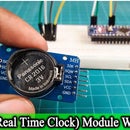Introduction: How to Use the Processing IDE With Arduino
welcome back. Today we will learn to On and off an LED bulb using the processing IDE. For that, we mainly need the Arduino IDE and Processing IDE. We all know about Arduino IDE. But, Processing IDE is a new thing to our blog. Are you a new member of my blog? Please go to the previous posts and read them. OK, let’s look at today’s post. The first time, we will learn what is the Processing IDE.
What is the Processing IDE?
Processing IDE is simulation software. This software began development in 2001. Also, this software mainly focused on visualization technology. You can use this software for game development, robot development, research, etc. Also, we can do 2D and 3D simulations using this software. Examples are drone simulation and flight simulation. However, we need the Java programming language to work with this processing IDE. But, Java’s basic knowledge is enough to work with this software. OK, now let’s go to install the processing IDE on your computer. Let’s do this step by step.
Supplies
Step 1
The first time, download a suitable version for your computer using this link. — Download
Step 1:
Step 2
Then, extract this zip file to a location of your choice.
Step 2: Components
- Arduino Nano board x 1
- LED bulb x 1
- Jumper wires
- Breadboard x 1
Step 3:
Step 1
First, let’s identify these components.




Step 4:
Step 2
Next, connect these components using the circuit diagram below.

Step 5:
Step 3
Now connect this Arduino Nano board to your computer using the USB cable. Let’s look at the code below.
Download this code — Download
This code is very easy. The first time enabled serial communication to connect the processing IDE. Then, the second pin is set as the output pin. After using an if condition, the serial communication value is checked to see if it is 1 or 0. Finally, if the serial value is 1, an LED bulb is turned on and if the serial value is 0, the LED is turned off.
Step 6:
Step 4
Now, select the correct board and port. After, click the upload button.




Step 7:
Step 5
OK, now let’s look at the processing code.
- The complete program of this project – Download
- Download this code — Download
Please remember to change the COM port on which your Arduino board is connected.

This code is based on the Java language. please read this code carefully and understand it. So finally, run this code and check your project. To do this, click on the LED on and LED off buttons in the UI (User Interface) we created.


OK, enjoy this project. The full video guide is below. So, we will meet in the next post.
Have a good day.
Bye-bye.




![Tilt Sensor With Arduino Nano [Code and Circuit Diagram]](https://content.instructables.com/F02/YOT1/M31LRV3L/F02YOT1M31LRV3L.png?auto=webp&crop=1%3A1&frame=1&width=130)

